SilverStone Heligon HE02 Review

With almost a kilogram of aluminum and copper SilverStone designed a new cooler, which copes with an overclocked six-core processor without any fans at all! Please, meet the new SilverStone Heligon HE02.
With almost a kilogram of aluminum and copper SilverStone designed a new cooler, which copes with an overclocked six-core processor without any fans at all! Please, meet the new SilverStone Heligon HE02.
There’s nothing new about the idea to cool a CPU with little or no noise at all. Many major brands offered or offer still silent cooling solutions. The Japanese firm Scythe has the gigantic Orochi and the Susanoo. Under the Thermalright brand we can see the old-time favorite HR-02 as well as its successor Macho. Cooler Master, on its part, offers the Hyper Z600 whereas Noctua’s flagship NH-D14 and some other models are perfectly suited for passive mode, too. Zalman, Thermaltake and Titan seem to be the only brands that have not tried to develop passive coolers.
And today we’ve got a new product of this kind. It goes under the name of SilverStone Heligon HE02 (SST-HE02).
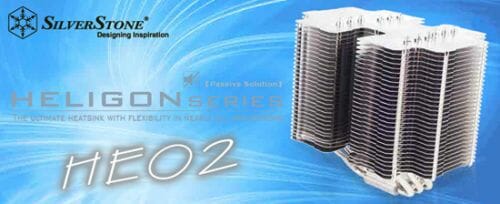
Technical Specifications and Recommended Pricing
The technical specifications and recommended pricing of the new SilverStone cooler are summed up in the following table:
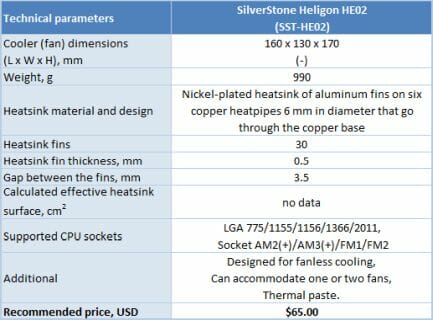
Packaging and Accessories
SilverStone’s cardboard packaging resembles Thermalright products but the sides of the box are dark brown.
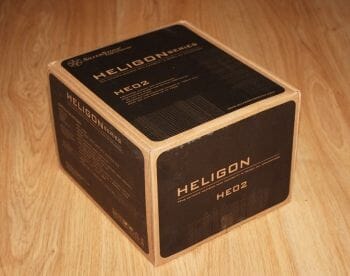
Moreover, this packaging is more informative, providing exhaustive data about the cooler on its sides.
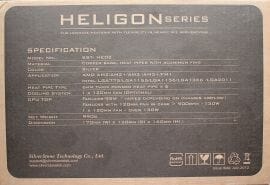
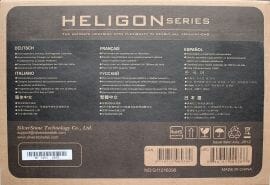
It is reliable too because the heatsink is fixed in pieces of foam rubber while the accessories are contained in an individual flat box.
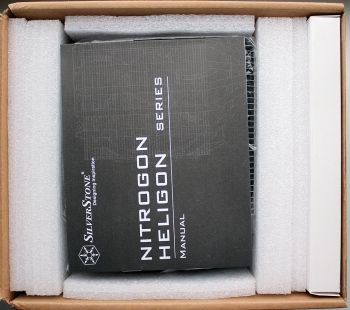
The accessories include a universal back-plate, a retention plate, two pairs of steel supports, four wire brackets to fasten fans, a user guide, screws and spacers with plastic bushings, and thermal grease:
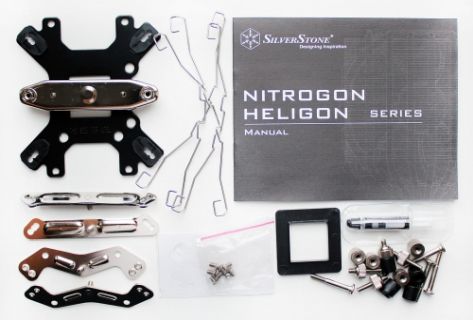
So, we have everything necessary to quickly mount the Heligon HE02 onto any modern platform. Like nearly every other computer component on this planet, the cooler is manufactured in China. It costs a substantial $65 and comes with a 1-year warranty.
Design and Functionality
First of all, we must note that the SilverStone Heligon HE02 is a very large CPU heatsink. It is 170 mm wide, 130 mm thick and 160 mm tall. This giant of a cooler is intricately shaped:
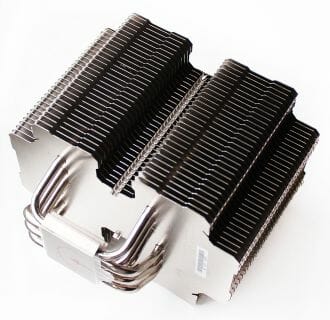
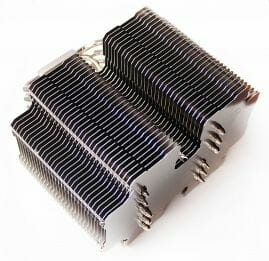
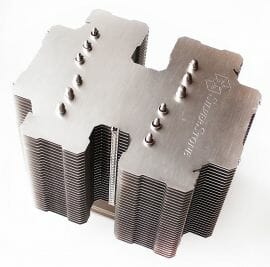
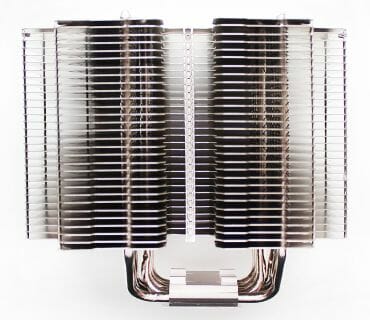
Despite the immense dimensions, the heatsink weighs only 990 grams according to its specs (and 971 grams according to our digital scales). That’s not much as today’s CPU coolers go. We’ve seen heavier ones.
The heatsink is based on six copper heat pipes, 6 millimeters in diameter. The pipes carry aluminum fins that are 0.5 mm thick and 3.5 mm apart from each other.
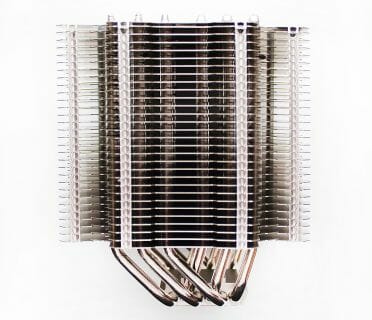
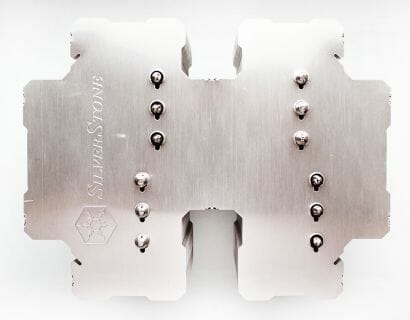
The increased spacing between the fins can be seen in every fanless cooler as it contributes to more efficient heat transfer by means of natural convection.
That’s also the reason why the heatsink fins are shaped so unusually, arousing associations with SpongeBob SquarePants.
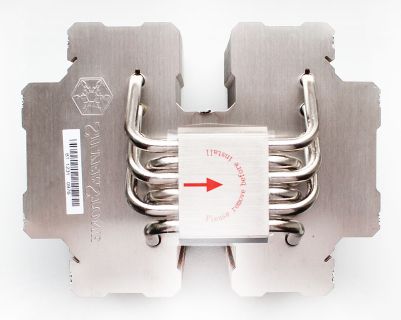
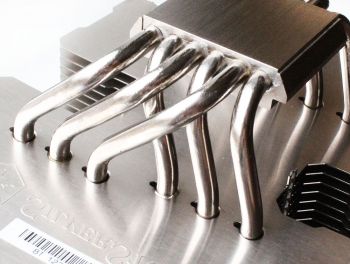
We should also take note of how the pipes go through the fins. SilverStone engineers decided to put the hottest pipes as far apart as possible to improve the cooler’s performance.
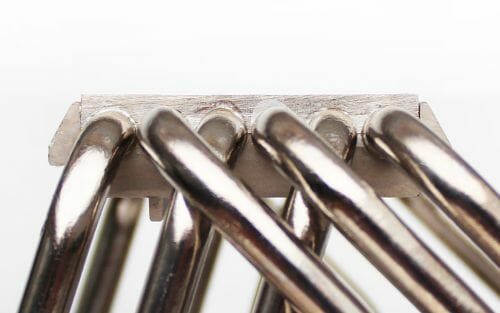
To improve it even further, the pipes are soldered to the fins as well as to the base:
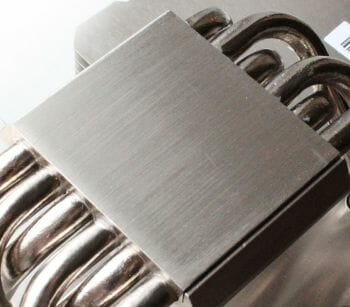
The nickel-plated copper base is at least 2 mm thick beneath the pipes.
The 42x38mm contact spot doesn’t seem to be finished perfectly, but it is ideally smooth to the touch.
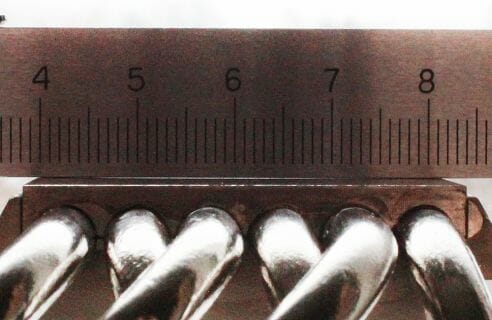
As opposed to Thermalright heatsinks, our sample of the SilverStone Heligon HE02 has a concave base.
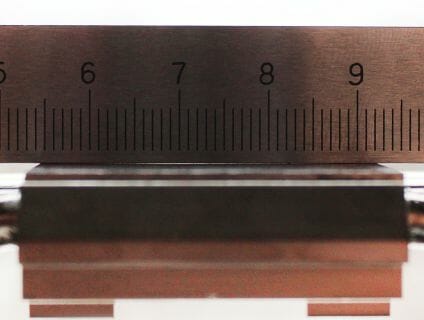
We were pleased with the thermal grease imprint this cooler left on our LGA2011 CPU that has a convex heat-spreader. We had never seen such a perfect picture before:
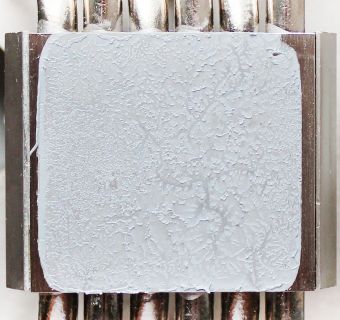
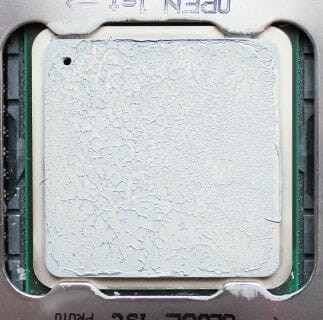
Compatibility and Installation
The SilverStone Heligon HE02 can be installed on any modern platform: Intel’s LGA 775/1155/1156/1366/2011 and AMD’s Socket AM2(+)/AM3(+)/FM1(2). As for specific CPUs, the manufacturer has limited their peak TDP to 95 watts for the fanless mode and 130 watts for when you use your Heligon HE02 with one fan. Sounds promising.
The installation procedure is basically the same for every compatible platform and only varies in minor details. You can read about them in the user manual while we will describe it using our LGA2011 mainboard.
First, you insert four threaded bushings into the LGA2011 socket’s mounting holes.
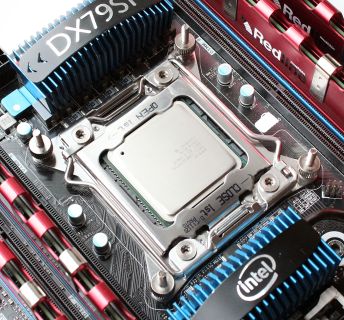
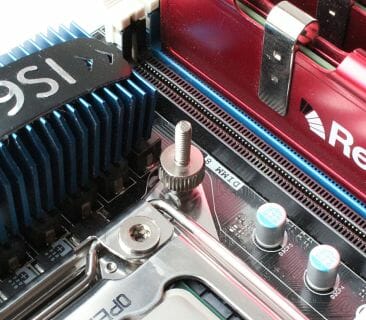
You can do this without any tools. Then you install the steel supports on them (using no tools again).
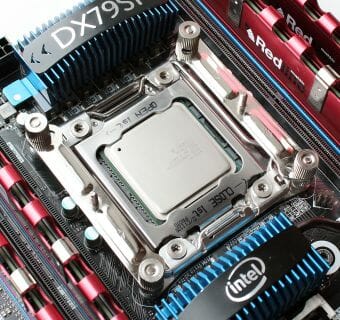
Apply some thermal grease and mount the cooler. It is secured with a retention plate that has two spring-loaded screws. You need an ordinary cross-point screwdriver for that.
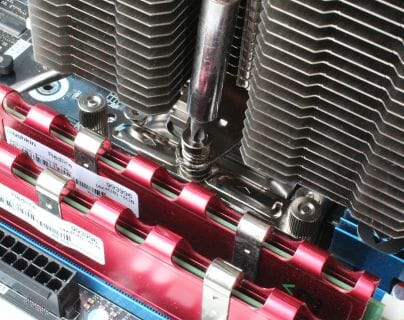
The pressure is rather high and the retention plate additionally fixes the heatsink, preventing it from turning around or shifting sideways on the CPU.
After installing the SilverStone Heligon HE02 on the mainboard, we measured the gap between the latter and the bottom fin of the heatsink. It was 50 millimeters. That’s quite enough for the cooler not to conflict with heatsinks on power system components or memory modules.
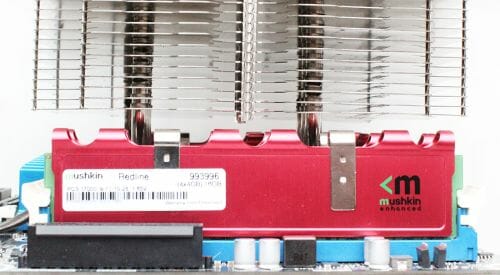
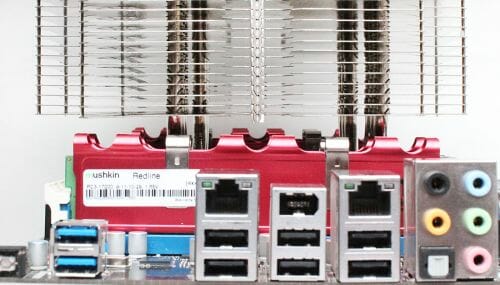
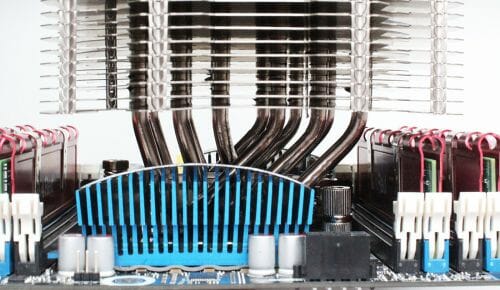
The Heligon HE02 looks imposing and highly promising inside our testbed:
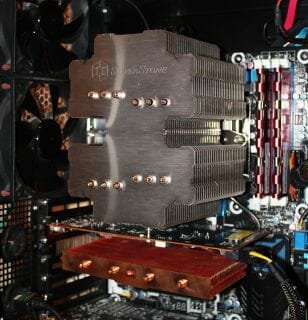
Let’s see what it can do in our tests.
Testbed Configuration and Testing Methodology
We tested all coolers inside a closed system case with the following configuration:
- Mainboard: Intel Siler DX79SI (Intel X79 Express, LGA 2011, BIOS 0537 from 07/23/2012);
- CPU: Intel Core i7-3960X Extreme Edition, 3.3 GHz, 1.2 V, 6 x 256 KB L2, 15 MB L3 (Sandy Bridge-E, C1, 32 nm);
- Thermal interface: ARCTIC MX-4;
- Graphics card: AMD Radeon HD 7770 1 GB GDDR5 128 bit, 1000/4500 MHz (with a passive copper heatsink from the DeepCool V4000 VGA cooler);
- System memory: DDR3 4 x 4GB Mushkin Redline (Spec: 2133 MHz / 9-11-10-28 / 1.65 V);
- System drive: Crucial m4 256 GB SSD;
- Drive for programs and games: Western Digital VelociRaptor (300GB, SATA-II, 10000 RPM, 16MB cache, NCQ) inside Scythe Quiet Drive 3.5” HDD silencer and cooler;
- Backup drive: Samsung Ecogreen F4 HD204UI (SATA-II, 2 TB, 5400 RPM, 32 MB, NCQ);
- System case: Antec Twelve Hundred (front panel: three Noiseblocker NB-Multiframe S-Series MF12-S2 fans at 1020 RPM; back panel: two Noiseblocker NB-BlackSilent PRO PL-1 fans at 1020 RPM; top panel: standard 200 mm fan at 400 RPM);
- Control and monitoring panel: Zalman ZM-MFC3;
- Power supply: Seasonic SS-1000XP Active PFC F3 1000 W (with a default 120 mm fan).
We have slightly adjusted out testing methodology for the fanless SilverStone Heligon HE02. First of all, to test the cooler efficiency in passive mode we slowed down all 120 mm case fans to 600 RPM, in order to reduce the generated noise as much as possible and to eliminate the effect of the internal case airflow on the heatsink. After that we determined the maximum stable frequency of our overclocked processor step by step. We are going to dwell on it in the next chapter of our review.
As for the tests with the cooling fans, we used our standard methodology and all the case fans were rotating at their default speed. However, we overclocked our six-core processor with the clock generator frequency set at 125 MHz, the multiplier at 34x and “Load-Line Calibration” enabled only to 4.25 GHz. The nominal processor Vcore was increased to 1.365 V in the mainboard BIOS. After that we attempted to test the new cooler at even higher frequency and voltage settings, but with no lock. Turbo Boost was disabled during this test session, and Hyper-Threading technology was enabled to increase the heat dissipation. The memory voltage was at 1.65 V and its frequency was 2000 MHz with 9-11-10-28 timings. All other parameters available in the mainboard BIOS and related to CPU or memory overclocking remained unchanged.
All tests were performed under Windows 7 Ultimate x64 SP1 operating system. We used the following software during our test session:
- LinX AVX Edition version 0.6.4 – to load the processor (memory – 4500 MB, Problem Size – 24234, two 11-minute cycles);
- Real Temp GT version 3.70 – to monitor the processor core temperatures;
- Intel Extreme Tuning Utility version 3.1.201.5 – for monitoring and visual control of all system parameters during overclocking.
So, the complete screenshot during the test session looks as follows:
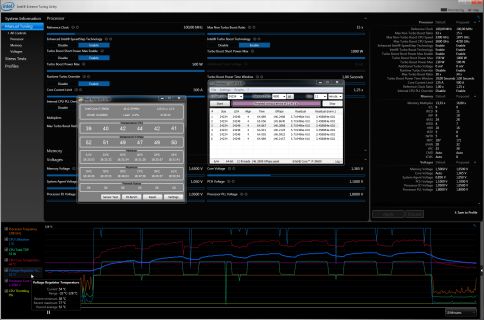
The CPU was loaded with two consecutive LinX AVX test runs with the settings as indicated above. The stabilization period for the CPU temperature between the two test cycles was about 8-10 minutes. We took the maximum temperature of the hottest CPU core for the results charts. Moreover, we will also provide a table with the temperature readings for all cores including their average values. The ambient temperature was checked next to the system case with an electronic thermometer with 0.1 °C precision that allows hourly monitoring of the temperature changes over the past 6 hours. The room temperature during our test session varied between 23.4-23.8°C.
We are going to compare the cooling efficiency of our SilverStone Heligon HE02 cooler against that of Thermalright TRUE Spirit 140 with one default TY-140 fan in two operational modes: at maximum rotation speed and in very quiet mode at 800 RPM:
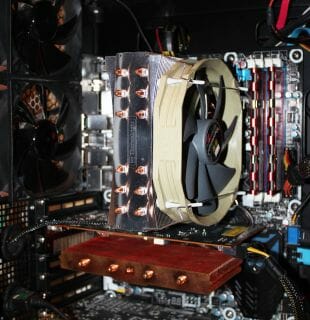
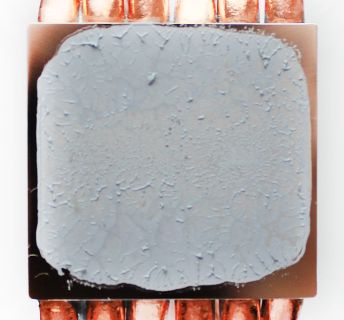
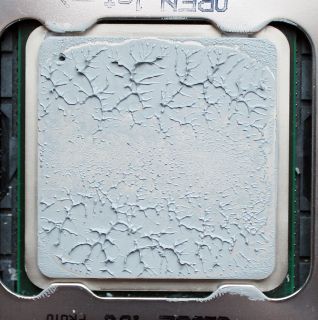
We also tested our SilverStone Heligon HE02 with the same TY-140 fan. Also we tested it with two 120 mm Corsair AF120 fans in 800-1600 RPM range. The rotation speed of all fans was controlled using our special in-house controller by changing the voltage in 0.5 V increments:
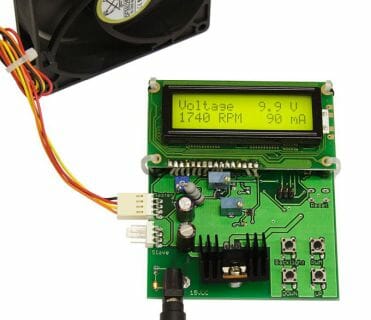
Cooling Efficiency Tests
First we checked out our Heligon HE02 in fanless mode without overclocking our CPU. It turned out that the giant cooler from SilverStone could easily cope with our Intel Core i7-3960X Extreme Edition at 3.33 GHz and 1.2 volts. After half an hour of running at peak load, the CPU was no hotter than 68°C. So then we tried to overclock the CPU and found out that the fanless cooler could keep it stable at 4 GHz and 1.265 volts. The peak CPU temperature was 87°C.
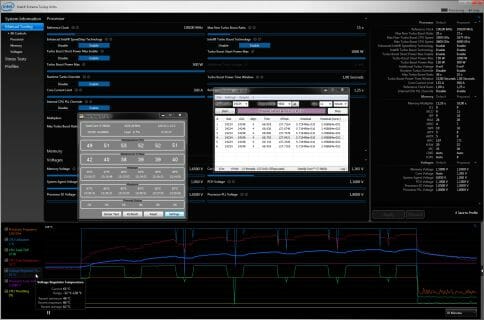
That’s an excellent result. Even considering the 600RPM system fans, the performance of the large Heligon HE02 in passive mode should not be underestimated.
Under the same conditions the Thermalright TRUE Spirit 140 with its single default TY-140 fan working at 600 RPM cools the 4GHz CPU better by 14°C at peak load:
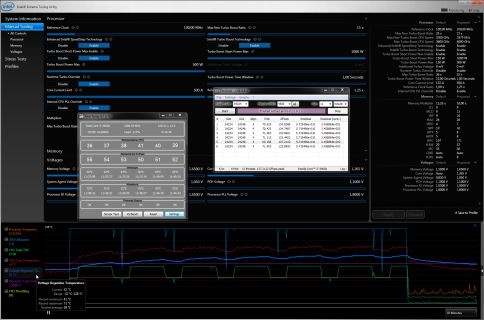
However, if the TRUE Spirit 140 is stripped of its fan, the temperature rises up to alarming levels 2-3 minutes into the test, triggering the CPU’s throttling mode.
Unfortunately, the SilverStone Heligon HE02 couldn’t cope with our CPU at higher clock rates and voltages.
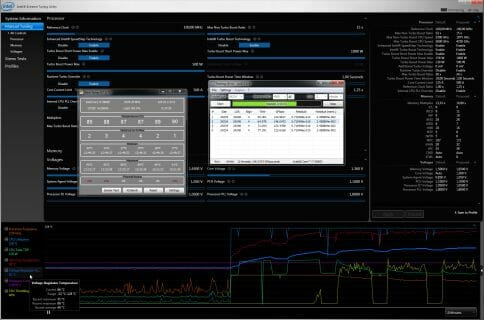
Well, we might have been too optimistic trying to overclock the CPU to 4.25 GHz at 1.36 volts with a passive, even though large, heatsink.
Now we set our system fans back at 1000 RPM, equip the Heligon HE02 with one TY-140 fan and then with two Corsair AF120 fans and run our tests again under conditions which are closer to real-life scenarios.
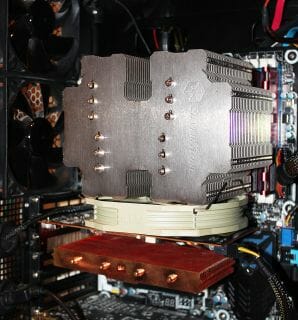
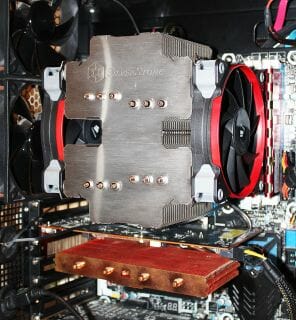
The Thermalright TRUE Spirit 140 will be used for the sake of comparison again. Here are the results.
It’s clear that the SilverStone Heligon HE02 isn’t optimized for active cooling. Equipped with the same TY-140 fan, it is inferior to the TRUE Spirit 140 by 8°C at peak load at 1280 RPM and by 10°C at 800 RPM. It is only with two Corsair AF120 fans that the Heligon HE02 gets closer to (but not ahead of) the Thermalright TRUE Spirit 140. Take note that increasing the speed of the two Corsair fans by 200 RPM leads to a linear increase in performance in the range of 800 to 1200 RPM, but switching from 1200 to 1530 RPM doesn’t produce a considerable reduction in CPU temperature.
There are no noise measurements in this review because the cooler is silent itself. Its noise will depend on what fans you are going to use it with.
Conclusion
The SilverStone Heligon HE02 does its job perfectly and cools the CPUs without any fans. It copes not only with 95W CPUs as promised by its official specs but even with hotter models. In our tests the Heligon HE02 maintained stability for a six-core Intel CPU working at 4 GHz and of 1.265 V voltage that was running LinX (Linpack x64)! According to our estimates, the CPU’s heat dissipation in these conditions exceeded 200 watts. You could hardly wish anything better from a CPU cooler that has no fans at all!
Of course, the large Heligon HE02 needs a roomy system case, preferably with system fans (even set at a low speed), but every overclocker has one whereas ordinary users will be quite satisfied with coolers which are smaller, cheaper and humbler.
Of course, we should once again point out the superb manufacturing quality of this product (the only thing they could have improved is the cooler base surface finish). SilverStone Heligon HE02 is fully compatible with all modern platforms, easy to install and features a reliable fastening mechanism.
Overall, SilverStone Heligon HE02 is first and foremost a perfect cooler for those users who value quietness over squeezing all the juices out of their CPU. That said, we are proud to award SilverStone Heligon HE02 our Ultimate Innovation title.